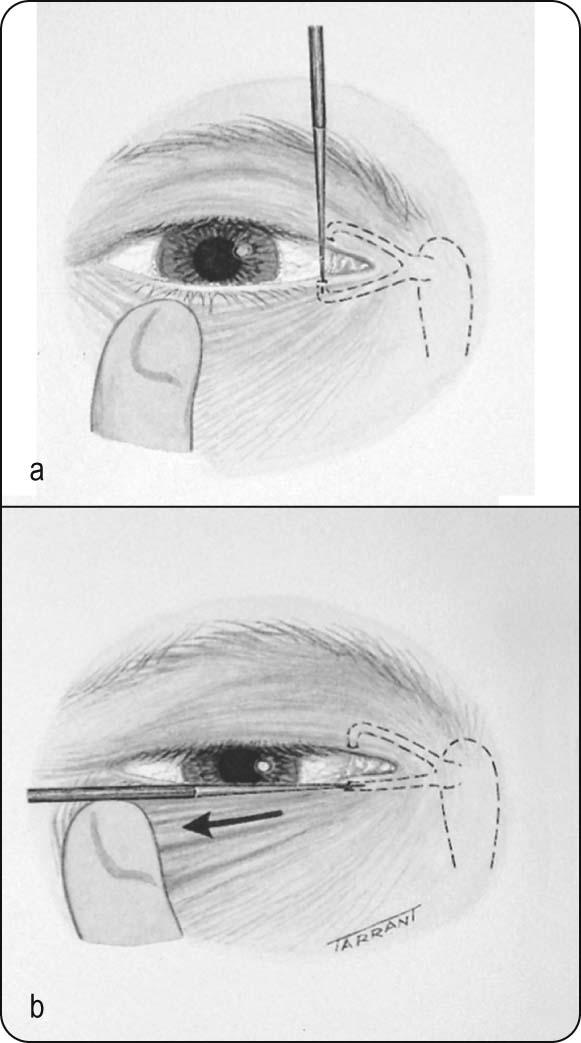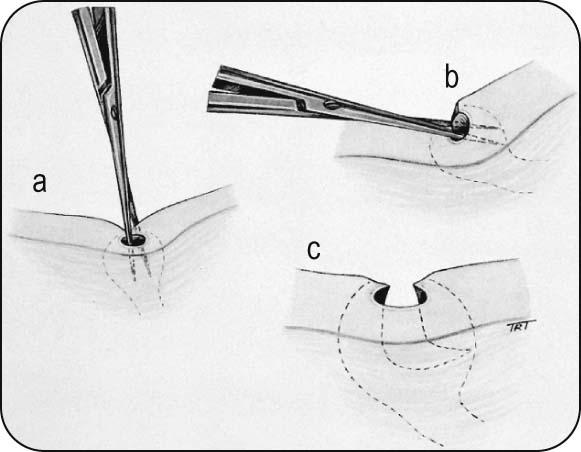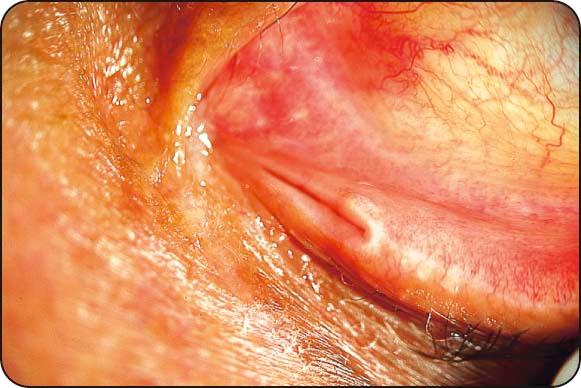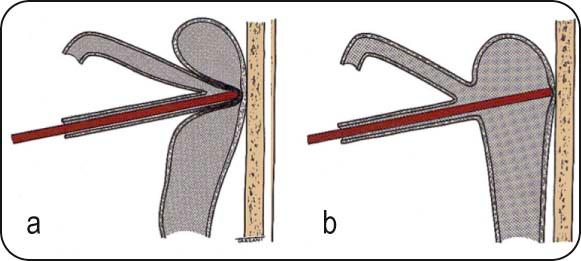Physical Address
304 North Cardinal St.
Dorchester Center, MA 02124
Causes: (a) idiopathic, (b) chronic marginal blepharitis, (c) herpetic (simplex, zoster) lid infection, and (d) conjunctival cicatrization.
Diagnosis: narrow inferior punctum in the absence of punctal malposition.
Treatment: dilatation alone ( Fig. 2.1 ) rarely confers long-term improvement; surgical punctoplasty is usually necessary ( Figs. 2.2 and 2.3 ).



Causes: (a) congenital and (b) acquired (e.g. trauma, herpes simplex infection, drugs, irradiation, chronic dacryocystitis).
Diagnosis: site of obstruction will usually be evident on lacrimal irrigation as a ‘soft stop’ ( Fig. 2.7a ).

Treatment
Intubation: silicone stents for partial obstruction.
Canaliculodacryocystorhinostomy (CDCR): for total individual canalicular obstruction when there is 6–8 mm of patent normal canaliculus between the punctum and the obstruction.
Lester Jones tube insertion: when it is not possible to anastomose the functional canaliculus to the sac (see below).
Become a Clinical Tree membership for Full access and enjoy Unlimited articles
If you are a member. Log in here